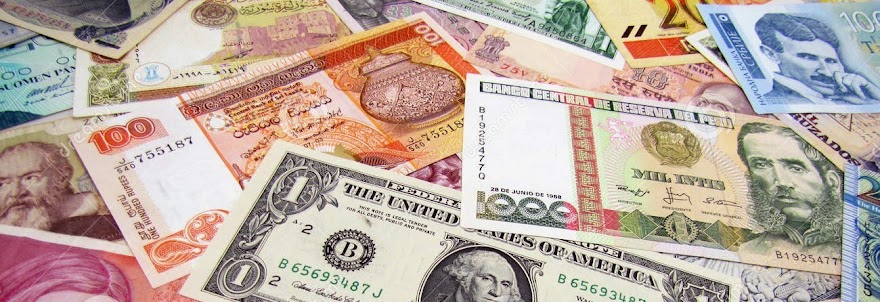By Nilaish
"Paper money is fragile and when used a lot, loses it's life but collecting them is even a great challenge!"
It is known from various catalouges [1] and [2] that, Indian paper money originated in 19th Century from Bengal Presidency. Bank of Hindostan and Bank of Bengal were the earliest banks in the presidency who issued paper money.
The earliest year of issue of Bank of Bengal is 1812. However, notes were issued since 1770 but there is no evidence to support these claims. Indian paper money is divided into roughly four periods, a) East India Company Period (1800-1860), b) British Government of India Issues (1861-1936), c) Reserve Bank of India British Issues (1937-1947) and d) Republic India RBI Issues (1949- ).
In the following list, I will pick up some of my personal favourites which are exceedingly rare currency notes of India. The price is not the guiding factor solely for this ranking. One may reshuffle and consider them ... as you wish....funny thing... Money!
Number 10: RBI 100 Rupees George VI Portrait - Front Facing Watermark
Image Courtesy: Rezwan Razack
Reserve Bank of India, 100 Rupees, ca. 1944, Bombay, signed by C.D. Deshmukh, watermark: front facing profile of King George VI, serial number in black. There are two varieties in serial number pattern of this type, i) Black serial and ii) Green Serial (Kanpur). It can command as high as Rs. 500,000 in this grade.
Number 9: RBI 100 Rupees HAJ Issue
Image Courtesy: Numismondo.net
Reserve Bank of India, 100 Rupees, Haj pilgrims issue, red orange in colour and two elephants in the reverse. This is a rare note and can command as high as Rs. 10,00,000.
Number 8: RBI 1000 Rupees 1938 Issue
Image Courtesy: Spink
Reserve Bank of India, 1000 Rupees, Calcutta, Signed by J.B. Taylor (2nd Governor of RBI). To get a note higher than the illustrated grade is a challenge! This note was sold for GBP 3,600.
Number 7: Government of India 100 Rupees Rangoon Issue
Image Courtesy: Numispedia
Government of India, 100 Rupees, Rangoon, ca. 1934, signed by J.B. Taylor, rare.
The notes issued for Rangoon circle having George V portrait are generally scarce to rare. One may consider the Rs. 1000 note having portrait of George V with Burma ovpt. (LEGAL TENDER IN BURMA ONLY). If we talk about this 100 Rupees note's worth then we are looking to fetch upto Rs. 3,50,000 or even higher!
Number 6: Rupees Two and Annas Eight Note!
Government of India, Rs. 2/8 (Rs. 2.5), Rangoon, signed by MMS Gubbay, ca. 1918, rare. The two rupees and eight annas notes are peculiar issue are very valuable. Government of India never issued this denomination since it was withdrawn in 1927. This denomination was issued to convert one dollar during the first world war. There were different circles who issued notes among them rare circle notes are, Rangoon, Lahore, Karachi and Cawnpore. A perfect example was auctioned by Todywalla Auctions recently for Rs. 6,50,000 + premium.
Number 5: George V 50 Rupees Issue
Government of India, 50 Rupees, Bombay, ca. 1930, signed by J.B. Taylor, rare.
Valued depending on condition and circle of issue lies between Rs. 3,00,000-6,00,000.
Number 4: RBI 5000 Rupees
Image Courtesy: Spink
RBI, 5000 Rupees, Bombay, signed by B.Rama Rau, ca. 1954, rare.
This note can be worth as much as Rs. 15,00,000.
Number 3: RBI 10,000 Rupees issued in 1954
Image Courtesy: Spink
RBI, 10,000 Rupees, Bombay, signed by BRama Rau, ca. 1954, rare.
This note was auctioned by Spink in 2012 for GBP 21,000+
Number 2: George V Rs. 10,000 note!
Image Courtesy: Rezwan Razack
Government of India, Rs. 10,000, Calcutta, ca. 1930, Signed by J.W. Kelly, issued note with serial number Z/1 132982. Unique example.
Number 1: RBI 1938 Rs. 10,000 first issue
Image Courtesy: Rezwan Razack
RBI, Rs. 10,000 Rupees, Lahore, signed by J.B. Taylor, issued note with serial number A/2 010613, rare. Unique example. Any circle issue of this type is a rare accomplishment. Truly remarkable.
References
[1] Albert Pick, 1994, Standard Reference Guide to World Paper Money, Krause Publication, USA.
[2] Rezwan Razack, Kishore Jhunjhunwalla; 2012, The revised standard reference guide to Indian Paper Money, Currencies & Coins, Munbai.






















































